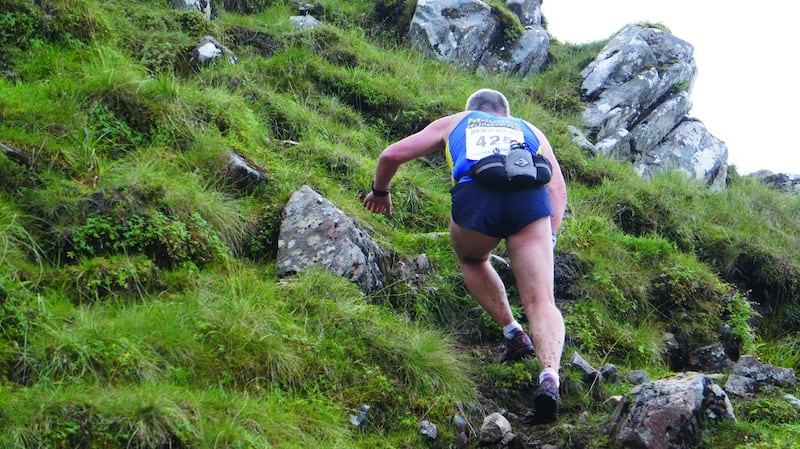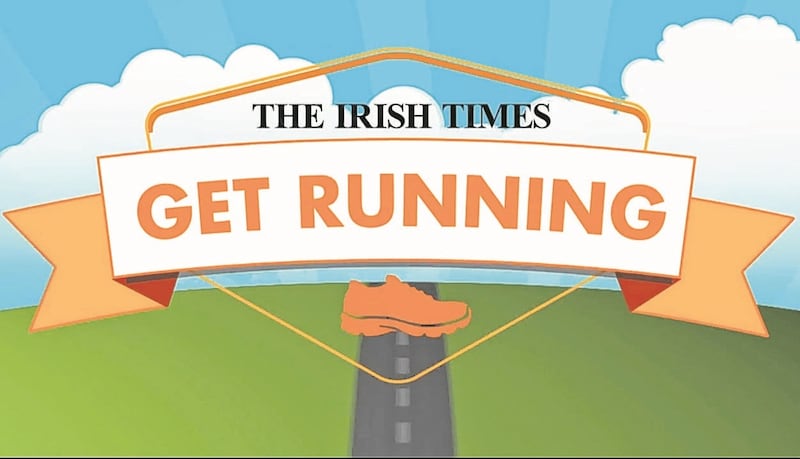With Dublin's Phoenix Park dating from the 17th century, our forbears grasped the importance of open green spaces for city dwellers. In 2003, the term "green exercise" – meaning physical activity undertaken in "green" surroundings – was coined by researchers at the University of Essex who demonstrated that it confers physical and mental health benefits (greenexercise.org).
And what better green exercise than running in the hills? As a middle-aged long-distance runner whose injury count plummeted after switching from concrete to countryside, I recommend it.
After all, we evolved to run long distances for food and water, so providing you have adequate fitness levels and running experience, you'll discover that we have a built-in ability to pace ourselves according to the conditions. For example, a study in the British Journal of Sports Medicine concluded that "running off-road elicits a heart rate response that varies with the altering demands of surface, vegetation and gradient".

Trails to mountain sides
According to the Irish Mountain Running Association (imra.ie), which was founded in 1980, the growing sport of mountain running caters for all participants from fun runners to elite athletes. Distances range from 3km to 128km over terrains from trails to mountain sides, with some climbing common to all. For example, this month saw the inaugural Glendalough Clover 84km race in the Wicklow Hills, over a course designed by Irish Ultra Team manager Adrian Tucker.
League races are typically run over marked routes, whereas championship events are usually over unmarked mountainsides requiring a map and compass. There are three leagues: the 13-race Leinster Summer League (between 5km and 12km); a four to six-race winter league in January, February and March; and a three-race trail league in late summer.
And age is no barrier to getting into the hills. Earlier this month Jim Patterson of Newcastle, Co Down, won the over-70s category at the World Masters Mountain Running Championships in Slovakia.
So what's the best way to get started in mountain running, and what are its attractions? I asked I asked Ricky Cowan MBE, of Mourne Runners in Co Down, and chairman of the Northern Ireland Mountain Runners Association (nimra.org.u k). One of Ireland's top rock climbers in the 1960s and 70s, in the 1980s Cowan began running up mountains.
He tells The Irish Times: "I'm 68 now and still getting out the door. I won the over-60 category in the 2016 Carrauntoohil race before becoming the over-60 2016 Irish Champion, and I won the over-60 category at the Connaught Championships in 2014, 2015 and 2016."
Getting started
“The best way to get started in the sport,” explains Cowan, “is to contact a local running club that specialises in mountain running. You’ll get taken out on the hills and taught how to experience the thrill of running downhill at break-neck speed, and how to map-read so you can navigate your way round the course if the mist descends. This’ll give you a buzz and you’ll learn enough mountain craft to be self-reliant. In time you’ll be running longer races, which are both adventures and challenges to look forward to.”
The most important item of kit, says Cowan, is a good pair of shoes “for running uphill on soft ground and descending at speed. A good grip’s essential, so ordinary trainers are out. Contemporary fell shoes have soles like tractor tyres, so invest in a good pair.”
Mountain races are often point-to-point competitions, so when the gun goes you’ve to navigate around a sequence of checkpoints – these tend to be on mountain summits – using any route you like.
“Consequently,” says Cowan, “at the start of a race you might see runners going off in different directions with you wondering if they know something you don’t!” The best way is to recce the course before the race: “This will get you out on the hill with your running friends where you’ll have time to appreciate the beauty and tranquillity of your surroundings and work out and practise the best lines around the course.”
Friendly and sociable
“Mountain runners,” says Cowan, “tend to be friendly and sociable, highlighted by the fact that after most races refreshments are provided. This gives the opportunity for a postmortem of the race, exchanging tales of derring-do. Imra and Nimra members have a reciprocal arrangement where we can compete in each other’s races. This causes some friendly and great inter-association races.”
Cowan also notes an increase in membership of the Nimra, adding “It’s also pleasing to see an influx of ladies into the sport.”
There’s joy in them thar hills.
PANEL: Ricky Cowan’s top five hill runs
1. Carrauntoohil (1,038m) is Ireland's highest mountain and a must-do for any self-respecting mountain runner. The views from the top on a clear day are spectacular. A misty day turns the race into a real test, only to be contemplated by the seasoned mountain runner.
2 & 3. Mweelrea (814m) and Croagh Patrick (764m) These two races, held in the first weekend in July as part of the Connaught Championship, are on Ireland's west coast.
Mweelrea, the highest mountain on the west coast, starts from a beach. With no discernible paths, it makes for interesting route choices.
Because of Croagh Patrick’s religious significance, and with a church on the top, it’s probably Ireland’s most visited mountaintop. This race has a strange but enjoyable atmosphere, taking first the pilgrimage route to the top past the church and on to the next peak before descending at speed into the next valley.
4. The Slieve Donard (850m) race runs from the main street in Newcastle, Co Down, to the summit of Slieve Donard (the highest mountain in Northern Ireland) and back. This race has been run annually for 73 years with a record time of 54 minutes up and down.
5. The Seven Sevens race, which covers the seven highest mountain summits over 700m in the Mourne Mountains, is 19 miles in length with over 9,000ft of climbing. Awesome.

Sign up for one of The Irish Times' Get Running programmes (it is free!).
First, pick the programme that suits you.
- Beginner Course: This programme is an eight-week course that will take you from inactivity to being able to run 30 minutes non-stop.
- Stay On Track: The second programme is an eight-week course for those of you who can squeeze in a 30- to 40-minute run three times a week.
- 10km Course: This is an eight-week course designed for those who can comfortably run for 30 minutes and want to move up to the 10km mark.
Best of luck!








